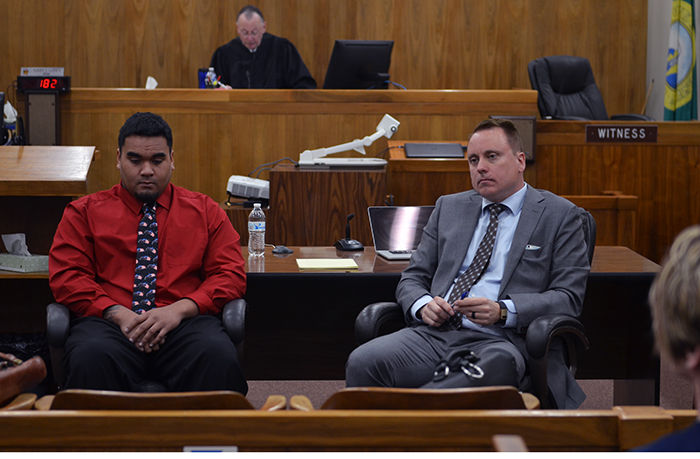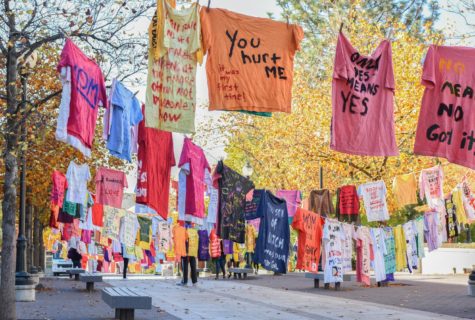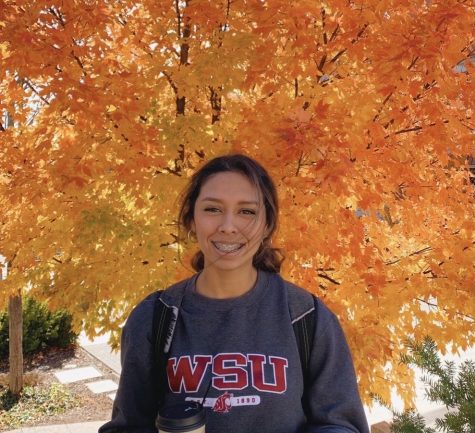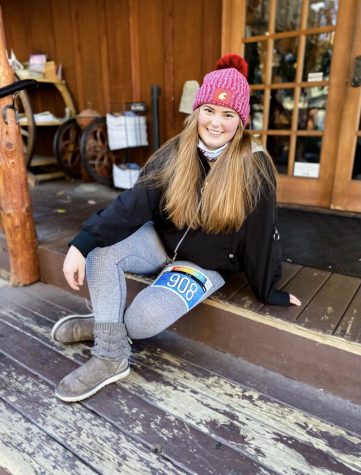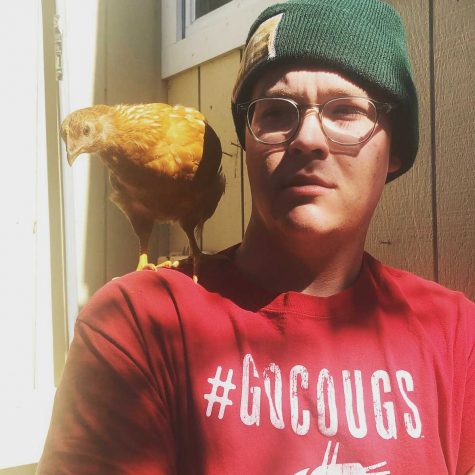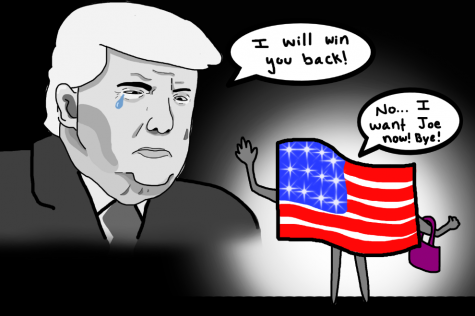Jury-selection process needs to accommodate the WSU community
Robert Barber, left, and his attorney Steve Graham listen to potential jurors answer questions during the trial on May 15 at the Whitman County District Court in Colfax.
May 24, 2017
As an American Samoan attending college in Pullman, the odds of Robert Barber being judged by a “jury of his peers” were slim.
His attorney, Stephen Graham told The Daily Evergreen in March that Barber was looking forward to facing this jury. However, this jury should have been a combination of his peers in the WSU community and citizens of Whitman County. Instead, he was judged by a group of Whitman County residents twice his age or older.
The average age of Barber’s predominantly white jury was 57.6 years old, the youngest being 44 and the oldest 69. Barber is 22.
The individuals chosen to sit on Barber’s jury are nothing like him — he is a Pac-12 defensive lineman, a recent college graduate with a bachelor’s degree in criminal justice and hopes of pursuing a career in professional football.
The Daily Evergreen believes there should be greater effort to include students in the jury-selection process. A jury should be reflective of Whitman County’s residents, a third of which are students. Most traditional undergraduate students will live in Pullman nine months a year for four years, but they rarely participate on a jury.
In Washington, juries are selected from voting records, driver’s license registrations and identicard registrations. From there, Washington state provides information to county clerk offices to send jury eligibility postcards. Once sent, a person will be added to the jury pool based on their answers to the questions on the form. Summons are sent randomly, and people attend jury selection until 12 jurors and one alternate are chosen.
Because of this selection process, it is possible that no student will be chosen to be on a jury. But that does not mean students and WSU community members should not be represented in the Whitman County judicial system.
This responsibility does not lie solely with the county, but with students as well. While attending WSU, students must register to vote in the county to even qualify to have a postcard sent to their residence.
Whitman County has about 48,000 residents, according to the July 2015 U.S. Census. Of these residents, almost 85 percent are white.
At WSU, there is more racial and ethnic diversity than in Whitman County. Of the 20,000 students at WSU Pullman, about 61 percent are white, according to a report on the investigation into discrimination and bias in WSU student conduct process. This 61 percent allows for other ethnicities and cultures to be represented on campus.
That being said, because the student population of WSU is one-third the population of Whitman County for the majority of the year, to be a completely representative jury, the jury would need to be about one-third WSU students.
When students are summoned to the jury selection, which is only about 10 percent of the time, they are often excused because it is deemed a hardship, Whitman County Clerk Jill Whelchel said. If serving on a jury did not create a hardship, she said, more students would serve on them.
This falls on the university to make it possible for the WSU community to participate in local government. If WSU created a jury waiver, more students and faculty would feel comfortable missing the necessary days of school to attend a trial.
Barber’s trial is just one jury trial Whitman County will hold this year. In 2016, Whitman County held 7 criminal trials, which usually have a jury, of its total 19 trials that year, according to the caseloads of the Courts of Washington report.
Perhaps the residents of Whitman County are sympathetic to Barber’s position, but when their ages are so drastically different, it is hard to believe they share many life experiences with him.
Age and life experiences make a difference when someone’s future is on the line. From now on, trials should include a traditional undergraduate, a recent graduate student or a member of the WSU community on a jury to allow for more equal representation through diversity of age and experience.


